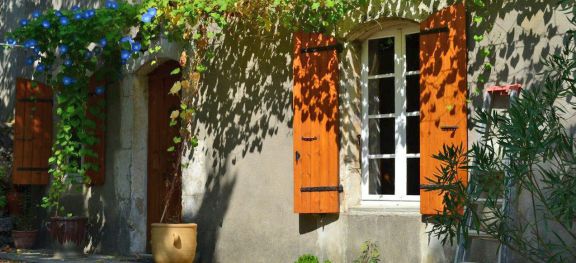Mas de Libian, Bout d'Zan 2019 Ardèche

Technically this certified biodynamic beauty is a Côtes du Rhône but it's from the far north of this massive appellation and is rather different from its southern counterparts.
From €9.50, £10.50, $14.99, 175 Swedish kronor, AU$35, SG$46
There are just so many things to like about this blend of Grenache with Syrah, not least the price, and the fact that it can be found in the UK, US, France, Spain, Finland, Sweden, Australia and, specially for our Richard Hemming MW, Singapore.
It’s certified biodynamic and made on an estate about halfway between Montélimar and Orange (see this map) that has been in the Thibon family since 1670. Gustave Thibon (1903–2001) was a self-taught French philosopher who was nominated for a Nobel prize four times. Simone Weil lived at Mas de Libian during the Second World War.
Okay, none of that is directly relevant to wine production. It was Gustave’s third child, Jean-Pierre, who decided that the main activity of the family farm should be wine production and he built a cellar as long ago as 1970 (when most wine farmers took their grapes to the local co-op). From the beginning, organic principles were adopted and Mas de Libian was certified biodynamic way back in 2005. Jean-Pierre and his cardiologist wife Jacqueline had three daughters, all of whom now work in wine.
Cécile is a wine researcher at Bordeaux’s ISVV, which is pretty impressive and must be useful for her sisters back home. Hélène, with her husband Alain, has been involved with the family wine enterprise since 1995. Catherine came on board in 2006 and soon afterwards bought a workhorse, one of the first to be employed in a vineyard in the Rhône. Nestor was later joined by Bambi. The domaine has been expanded to 25 ha (62 acres) so much ploughing is needed. They also, way ahead of many other domaines, saw the need to have land set aside for other activities and so eight hectares are devoted to olives, cereals, a vegetable garden and flower garden as well as a few beehives.
The cellar had been expanded in 1982 and was doubled in 2011 to make way for more large oak barrels, particularly 30- and 40-hl casks from fashionable Austrian cooper Stockinger. The image above from their website is of the main house and I love it because it's so typical of a friendly, not-too-grand building in the south of France.
The name of this week’s wine recalls Jean-Pierre’s boyhood nickname. It’s three-quarters Grenache and a quarter Syrah but, being so far north, it has none of what can be a slightly jammy, sweet character found in hotter parts of the southern Côtes du Rhône. The village is St Marcel d’Ardèche and they are on the right bank of the Rhône not far from Bollène on the left bank, another source of interesting middle Rhône wine, and tantalisingly close to the great wine list of the restaurant Beaugravière in Mondragon.
This part of the Rhône Valley is pretty windy, which presumably keeps the vines healthy, and soils vary from the common clay-limestone, to large pebbles and some sand (so quite like Châteauneuf). Average yields are 45 hl/ha with the Grenache grown as bush vines.
The two varieties are vinified separately, all destemmed, before 15 days’ fermentation and maceration, and then 30% of the wine needed to fill the 60,000 bottles produced is aged for nine months in those large oak barrels. The blend is now obviously fully integrated to produce a really well-balanced composite of the richness of Grenache and the structure of Syrah. It’s too strong, 14.5%, to drink without food in my view but would be thoroughly satisfying with a wide range of vivid flavours. I could imagine enjoying it not just with smokily barbecued meat but with highly spiced Indian or Mexican food. I gave it an enthusiastic 16.5 out of 20 and suggest it will still be drinking well in 2024 – though I note that the Thibons claim this wine lasts eight years.
In the UK the wine is available from The Wine Society, whose buyer Marcel Orford-Williams says, ‘We’ve been working with them for about 15 years and haven’t missed a vintage. There is no shortage of good wine in the Rhône but I always felt that Libian stood out as something a little different with its intensity and purity of fruit.’ I really don’t think you would be disappointed by this wine, unless you avoid 14.5% wines on principle.
Explore more Côtes du Rhônes of all colours rated highly by the JR.com team recently.
Become a member to view this article and thousands more!
- 15,418 featured articles
- 274,398 wine reviews
- Maps from The World Atlas of Wine, 8th edition (RRP £50)
- The Oxford Companion to Wine, 5th edition (RRP £50)
- Members’ forum
- 15,418 featured articles
- 274,398 wine reviews
- Maps from The World Atlas of Wine, 8th edition (RRP £50)
- The Oxford Companion to Wine, 5th edition (RRP £50)
- Members’ forum
- Commercial use of our Tasting Notes

